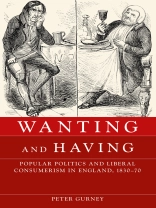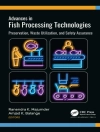Nineteenth-century England witnessed the birth of capitalist consumerism. Early department stores, shopping arcades and provision shops of all kinds proliferated from the start of the Victorian period, testimony to greater diffusion of consumer goods. However, while the better off enjoyed having more material things, masses of the population were wanting even the basic necessities of life during the ‘Hungry Forties’ and well beyond. Based on a wealth of contemporary evidence and adopting an interdisciplinary approach, Wanting and having focuses particularly on the making of the working-class consumer in order to shed new light on key areas of major historical interest, including Chartism, the Anti-Corn Law League, the New Poor Law, popular liberalism and humanitarianism. It will appeal to scholars and general readers interested in the origins and significance of consumerism across a range of disciplines, including social and cultural history, literary studies, historical sociology and politics.
Table of Content
1. ‘A new order of things’: mapping popular politics onto consumption
2. ‘Rejoicing in potatoes’: the politics of consumption during the ‘Hungry Forties’
3. ‘The Andover Cannibalism’: popular entitlement and the New Poor Law
4. ‘Yours in the cause of Democracy’: democratic discourse and the Chartist challenge
5. ‘Consumers of their own productions’: popular radicalism and consumer organising
6. ‘Please, sir, I want some more’: Dickens on working-class scarcity and middle-class excess
7. ‘The Sublime of the Bazaar’: the religion of free trade and the making of modern consumerism
8. ‘The lion turned into a lamb’: the consumer politics of popular liberalism
Index
Epilogue: ‘The Age of Veneer’: the limits of liberal consumerism
About the author
Peter Gurney teaches British Social History at the University of Essex











